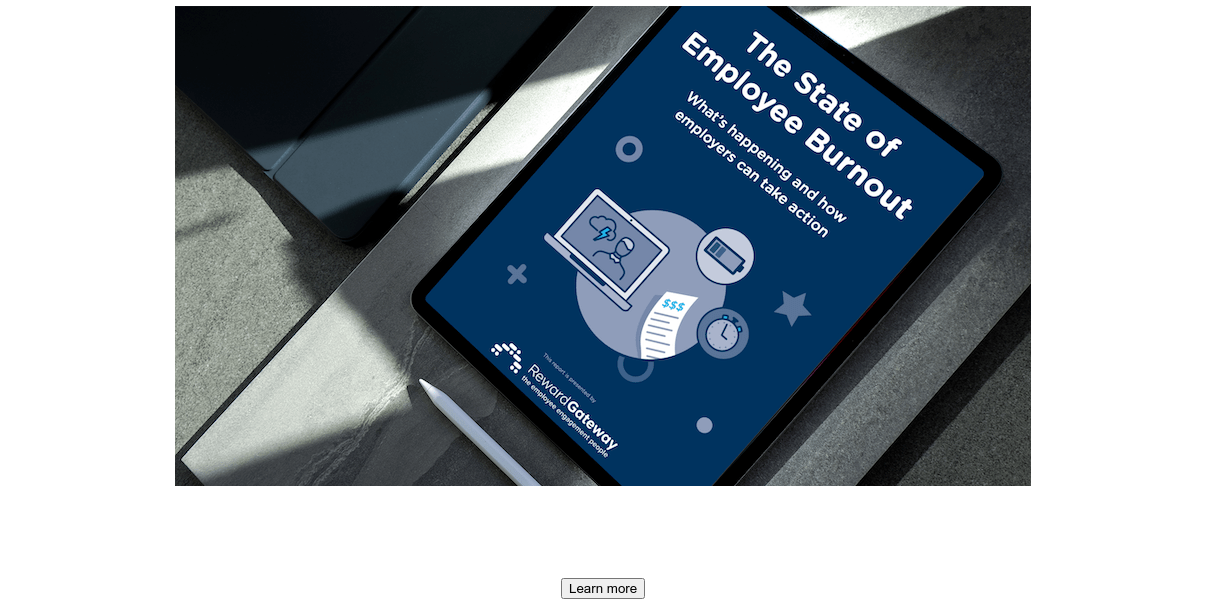Without being overly dramatic, it is very true that employee burnout is a real and present danger in all industries around the globe. Many factors are playing into this, including the increasing rates of inflation, rising costs and the weight of COVID-19.
Now that you know what to look for in your workforce to detect employee burnout, let’s look at some ways to reduce it and build employee engagement back up to its full potential.
| 5 forms of burnout to battle: |
| 1. Emotional exhaustion |
| 2. Cynicism |
| 3. Detachment |
| 4. Inefficiency |
| 5. Feelings of inadequacy |
1. Emotional exhaustion
Employees are more likely to exhibit negative emotions at work and less likely to be able to power through adversity.
Ensure that employees are taking breaks during the day to step away from their computer (good for their eyes, as well as their mind!), take a walk, have a snack or otherwise take a few minutes for themselves in the day.
 Or, if your employees don’t work at computers, but on their feet, for example, their breaks might look much different from their desked counterparts.
Or, if your employees don’t work at computers, but on their feet, for example, their breaks might look much different from their desked counterparts.
Ask your staff directly what they need to stay fresh and motivated all day to help them understand that they are a valued and respected member of the team.
It’s a clear indication to your staff that you care about their wellbeing, as well as their productivity.
Remember that you hired them because you trusted they were capable of doing the work. Trust them now to do their work while taking care of themselves at the same time – and neither needs to take a backseat to the other. In turn, they will trust you to have their backs and wellbeing in mind.
2. Cynicism
They are unable to go with the flow and see the purpose of their work.
If your employees are losing sight of your mission – and/or their role within it – assess your organization’s values and mission statement. Do they need a refresh? Or do they need a new communication push?
Reward Gateway’s internal communications tools helps you get important messages, congratulations, thank yous and more out to your broader staff. You can set up blogs and send out newsletters with important updates or exciting changes – and ensure that everyone is able to see it. If you don’t have an internal newsletter already, get one started and make appreciation callouts a staple. Take these opportunities to remind your staff why they chose to work for you over any other organizations – and why they should continue to do so.
It’s simple, but effective: Remind employees of the good, not the bad, to bring more joy into their day-to-day.
3. Detachment
They are disengaged emotionally from their work and from others.
To prevent this form of employee burnout, open the decision-making process to affected employees when introducing change. This can take the form of a survey requesting targeted feedback on what problems your employees face and how they would like to see them addressed. The best part of this approach is the broader understanding and experience that can contribute to the conversation, unveiling needs or concerns that other decision-makers could not have anticipated alone.
 You could also try a series of town halls, beta-testing groups for the frontrunners – when we’re talking about tools, particularly – and working groups (once a selection has been made). Together, they ensure that the chosen solution addresses highlighted concerns without creating any avoidable problems.
You could also try a series of town halls, beta-testing groups for the frontrunners – when we’re talking about tools, particularly – and working groups (once a selection has been made). Together, they ensure that the chosen solution addresses highlighted concerns without creating any avoidable problems.
It also ensures that the people most affected feel more connected to the end result, because they got to help shape it.
4. Inefficiency
They are distracted and unable to focus on tasks, or they take on too many tasks simultaneously and cannot complete them.
Combat this aspect of burnout with regular temperature checks among staff. Ensure that management and leadership are fostering open, supportive spaces for communication to express reception to both changes and the status quo. Knowing what is and isn’t working for the people doing the work is vital to providing them with systems and tools that best suit their needs and go a long way in alleviating potential hurdles.
Encourage managers to share their own frustrations to help employees feel more comfortable giving honest feedback. People often don’t feel comfortable vocalizing a complaint until someone else does. After all, you can’t solve a problem if you don’t know it exists.
5. Feelings of inadequacy
They doubt themselves and their ability to perform and support the team at work.
 This is most easily prevented and combatted by strengthening the organization’s recognition culture. It can often help to overhaul a reward system as well, especially when rewards are few and far between or reserved for certain milestones.
This is most easily prevented and combatted by strengthening the organization’s recognition culture. It can often help to overhaul a reward system as well, especially when rewards are few and far between or reserved for certain milestones.
Knowing that you won’t receive any recognition for your time and effort until you’ve given five years can be disheartening, and lead an employee back to that "why bother" stage of burnout. Employees want to feel recognized and appreciated for their contributions to their employers and teams.
In a recent Reward Gateway survey, we found that 66% of employees in the U.S. say they’d be happier at work if they were simply thanked more often.
Our reward and recognition platform offers organizations various ways to demonstrate their appreciation to their staff, such as easy-to-send eCards that recognize employees for anything from an anniversary to a job well done – or even just to say thanks for doing what you do.
Employees who are openly appreciated are more likely to stay at their company and experience less burnout overall. If you’re interested in your own R&R program, reach out to a member of our team to get started.

 Emily Mellwood
Emily Mellwood


